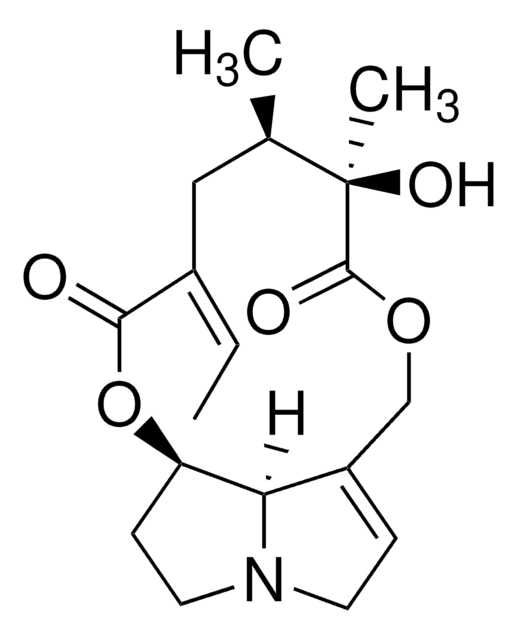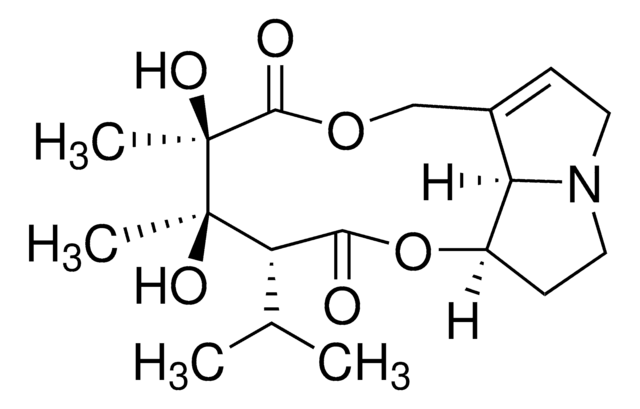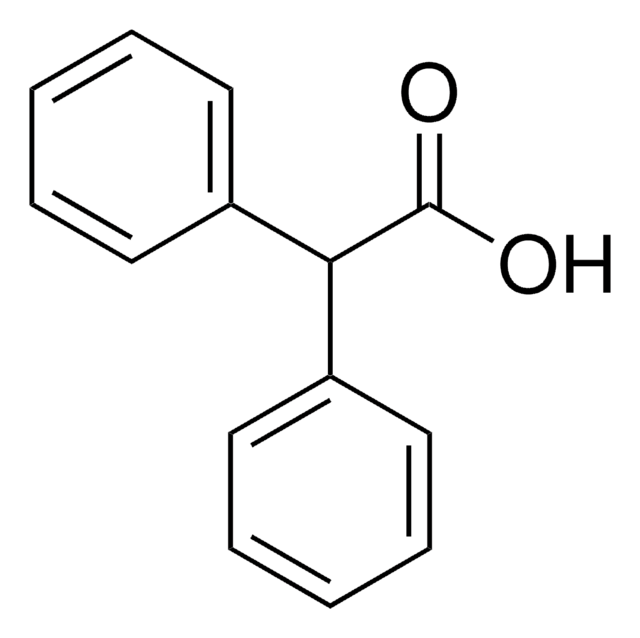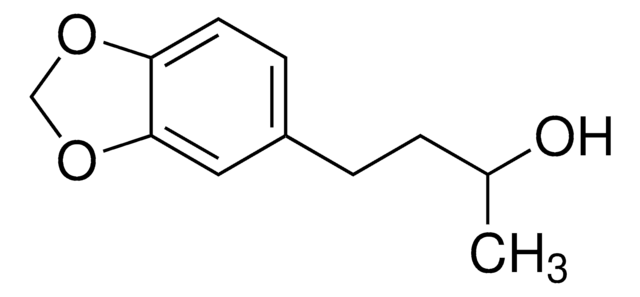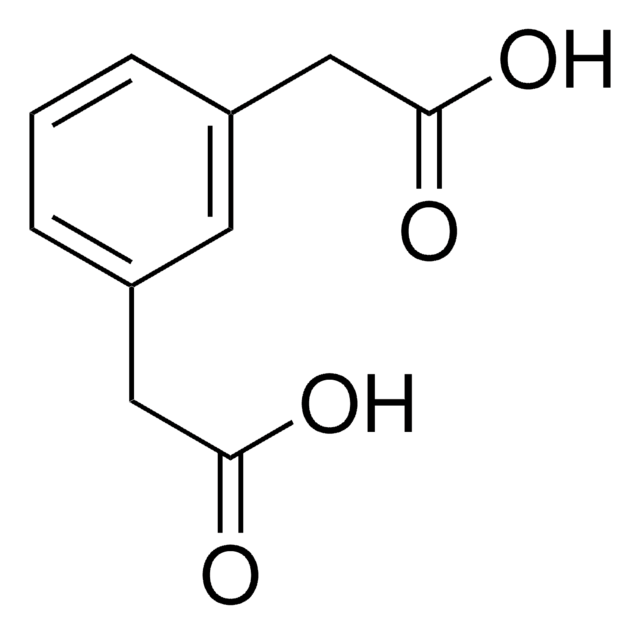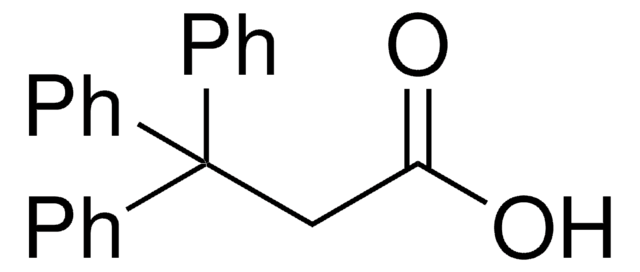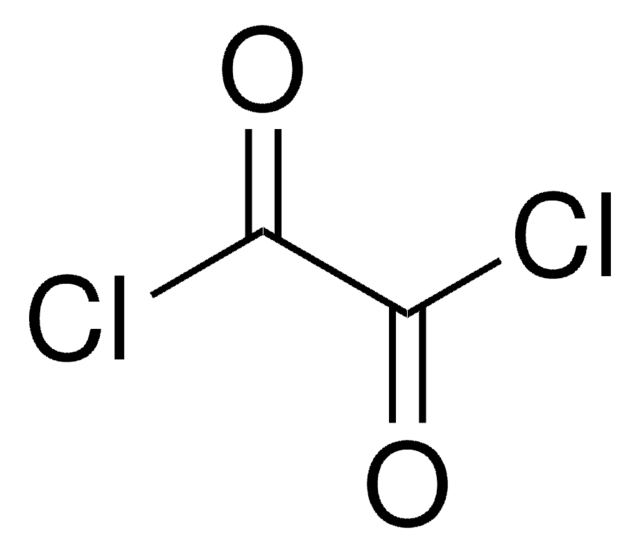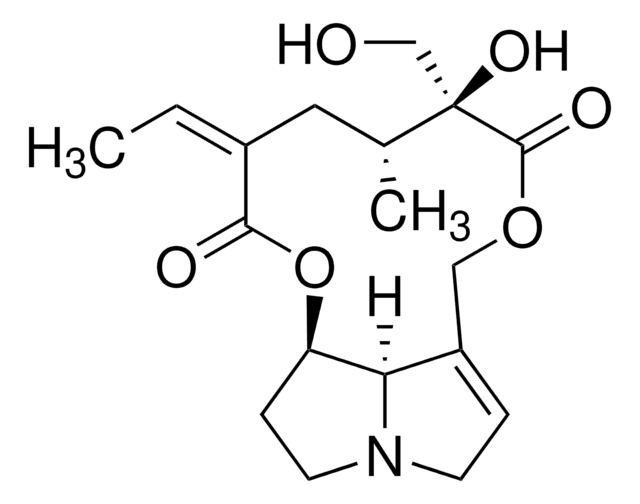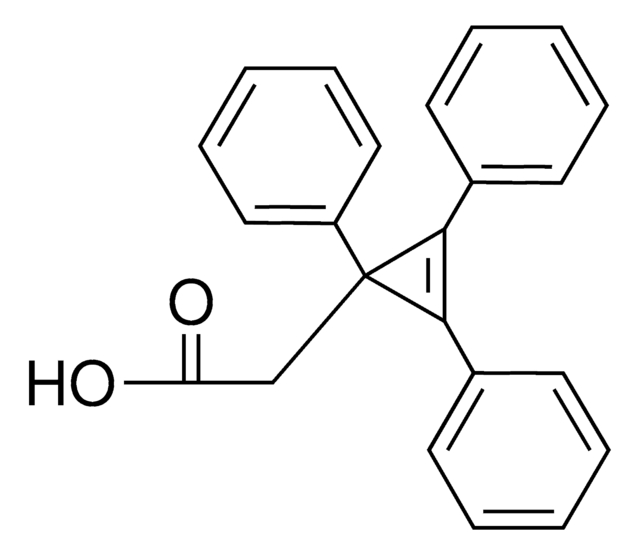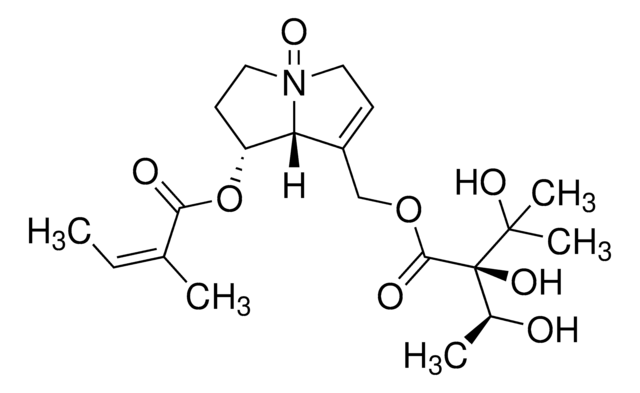T81205
Triphenylacetic acid
99%
Synonym(s):
Tritylformic acid
Sign Into View Organizational & Contract Pricing
All Photos(1)
About This Item
Linear Formula:
(C6H5)3CCO2H
CAS Number:
Molecular Weight:
288.34
EC Number:
MDL number:
UNSPSC Code:
12352100
PubChem Substance ID:
NACRES:
NA.22
Recommended Products
Quality Level
Assay
99%
mp
270-273 °C (lit.)
SMILES string
OC(=O)C(c1ccccc1)(c2ccccc2)c3ccccc3
InChI
1S/C20H16O2/c21-19(22)20(16-10-4-1-5-11-16,17-12-6-2-7-13-17)18-14-8-3-9-15-18/h1-15H,(H,21,22)
InChI key
DCYGAPKNVCQNOE-UHFFFAOYSA-N
Looking for similar products? Visit Product Comparison Guide
Hazard Statements
Hazard Classifications
Aquatic Chronic 4
Storage Class Code
11 - Combustible Solids
WGK
WGK 3
Flash Point(F)
Not applicable
Flash Point(C)
Not applicable
Personal Protective Equipment
dust mask type N95 (US), Eyeshields, Gloves
Choose from one of the most recent versions:
Already Own This Product?
Find documentation for the products that you have recently purchased in the Document Library.
A D Blackwood et al.
Biochimica et biophysica acta, 1206(2), 161-165 (1994-06-12)
Combinations of triisooctylamine with its hydrochloride, or of triphenylacetic acid with its Na+ salt, can function as buffers for use during biocatalysis in organic media. They can control the pH of an adjacent aqueous phase, even though both forms of
S Fournel et al.
Biochimica et biophysica acta, 883(2), 190-196 (1986-09-04)
Bilirubin UDPglucuronosyltransferase of rat or human liver microsomes was inhibited, in vitro, by triphenylacetic acid and by structurally related arylcarboxylic acids. This inhibition appeared to be competitive towards bilirubin, and mixed-type towards UDPglucuronic acid. A decrease in the number of
Grant A McNaughton-Smith et al.
Journal of medicinal chemistry, 51(4), 976-982 (2008-02-01)
Sickle cell disease (SCD) is a hereditary condition characterized by deformation of red blood cells (RBCs). This phenomenon is due to the presence of abnormal hemoglobin that polymerizes upon deoxygenation. This effect is exacerbated when dehydrated RBCs experience a loss
Our team of scientists has experience in all areas of research including Life Science, Material Science, Chemical Synthesis, Chromatography, Analytical and many others.
Contact Technical Service